
Sword-and-sandal, also known as peplum, is a subgenre of largely Italian-made historical, mythological, or biblical epics mostly set in the Greco-Roman antiquity or the Middle Ages. These films attempted to emulate the big-budget Hollywood historical epics of the time, such as Samson and Delilah (1949), Quo Vadis (1951), The Robe (1953), The Ten Commandments (1956), Ben-Hur (1959), Spartacus (1960), and Cleopatra (1963). These films dominated the Italian film industry from 1958 to 1965, eventually being replaced in 1965 by spaghetti Western and Eurospy films.
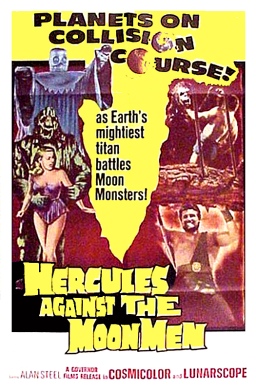
Hercules Against the Moon Men is a 1964 Franco-Italian international co-production sword and sandal film. It was directed by Giacomo Gentilomo in his final film and stars Alan Steel and Jany Clair. The English version of the film runs for 90 minutes and is dubbed.
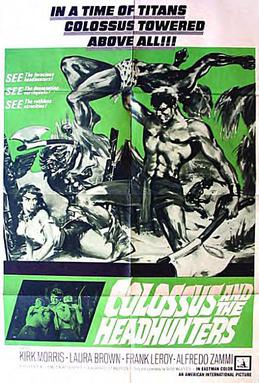
Colossus and the Headhunters, is a 1963 Italian peplum film written and directed by Guido Malatesta, and starring Kirk Morris.
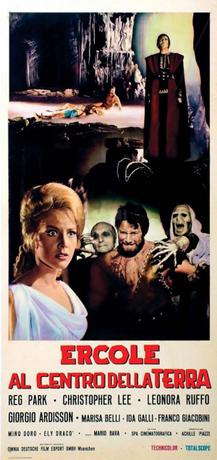
Hercules in the Haunted World is a 1961 Italian sword-and-sandal film directed by Mario Bava. British bodybuilder Reg Park plays Hercules while British actor Christopher Lee appears as Hercules' nemesis Lico. Shooting at Cinecittà, director Mario Bava used some of the same sets from the earlier Hercules and the Conquest of Atlantis which also stars Park.
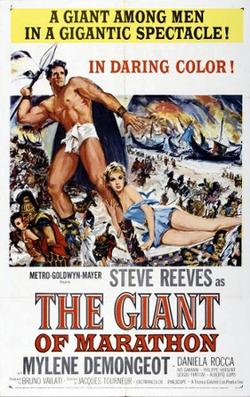
The Giant of Marathon is a 1959 international co-production sword and sandal film, loosely based on the Battle of Marathon. It was directed by Jacques Tourneur and Mario Bava. It starred Steve Reeves as Phillipides. The film was a co-production between Italy's Titanus and Galatea Film and France's Lux Compagnie Cinematographique de France and Societe Cinematographique Lyre.
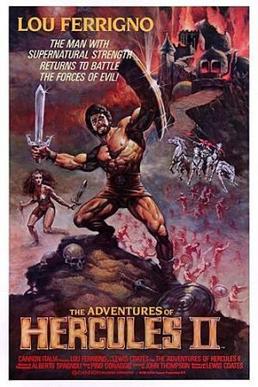
The Adventures of Hercules is the 1985 sequel to the 1983 film Hercules. It was written and directed by Luigi Cozzi and has bodybuilder-turned-actor Lou Ferrigno reprising his role as the title character.

Hercules in the Vale of Woe, a.k.a. Hercules in the Valley of Woe, is a 1961 Italian Franco and Ciccio comedy film directed by Mario Mattoli and starring Kirk Morris as Maciste and Frank Gordon as Hercules. The film is a comical take on the popular sword-and-sandal epics of the 1950s and 1960s.
Alberto De Martino was an Italian film director and screenwriter. Born in Rome, De Martino started as a child actor and later returned to the cinema where worked as a screenwriter, director and dubbing supervisor. De Martino's films as a director specialised in well-crafted knock-offs of Hollywood hit films. These films were specifically created films in Western, horror and mythology genres which were developed for the international market. The Telegraph stated that his best known of these film was probably The Antichrist. The Antichrist capitalized on the box-office appeal of The Exorcist (1973) and in its first week in the United States earned a greater box office than Jaws.

Maciste, the Avenger of the Mayans is a 1965 Italian film directed by Guido Malatesta.
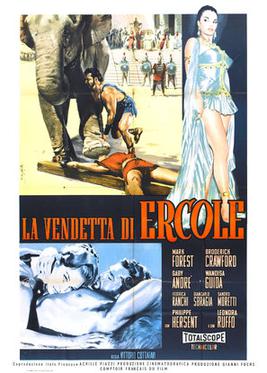
Goliath and the Dragon is a 1960 international co-production sword-and-sandal film starring Mark Forest and Broderick Crawford. The name of the main character was changed from Hercules to Emilius for release in North America by American International Pictures to sell it as a sequel to their earlier Goliath and the Barbarians (1959).
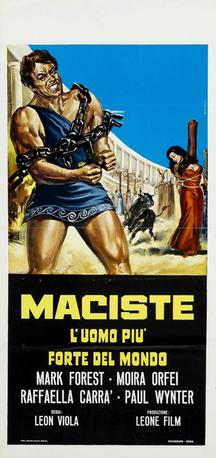
Mole Men Against the Son of Hercules is a 1961 Italian peplum film directed by Antonio Leonviola and starring Mark Forest.
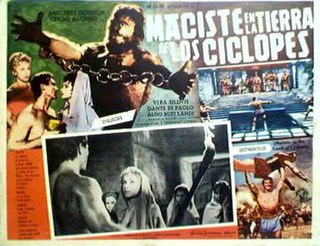
Atlas in the Land of the Cyclops is a 1961 Italian Gothic horror film starring Gordon Mitchell and Chelo Alonso.
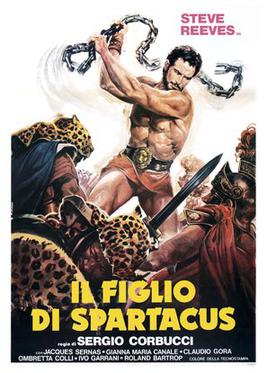
The Slave is a 1962 Italian peplum film directed by Sergio Corbucci and starring Steve Reeves and Gianna Maria Canale. It is an unofficial sequel to Stanley Kubrick's 1960 film Spartacus, as it includes a mention of the character Varinia, who was specifically created for the novel template for that film. The running time was 100 minutes.

Hercules Against the Barbarians is a 1964 Italian peplum film directed by Domenico Paolella.

Hercules Against the Mongols is a 1963 Italian peplum film directed by Domenico Paolella.
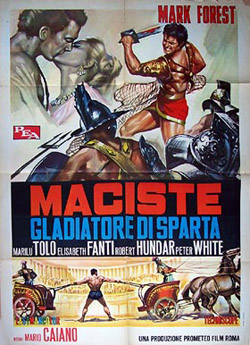
The Terror of Rome Against the Son of Hercules is a 1964 peplum film directed by Mario Caiano and starring Mark Forest and Marilù Tolo.
Nando Tamberlani (1896–1967) was an Italian film actor. A character actor in Italian cinema of the postwar era, he was the brother of actor Carlo Tamberlani. Another brother Ermete Tamberlani was also an actor. He appeared in a number of peplum epics during the late 1950s and 1960s.

Julius Caesar Against the Pirates is a 1962 Italian adventure film written and directed by Sergio Grieco and starring Gustavo Rojo, Abbe Lane and Gordon Mitchell. It is loosely based on actual events from the early life of Julius Caesar.
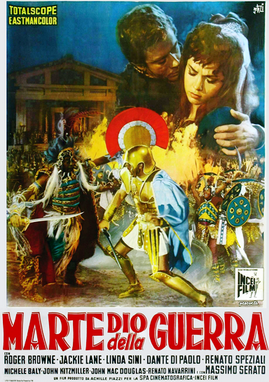
Venus Against the Son of Hercules is a 1962 Italian peplum film written and directed by Marcello Baldi and starring Roger Browne and Jackie Lane.
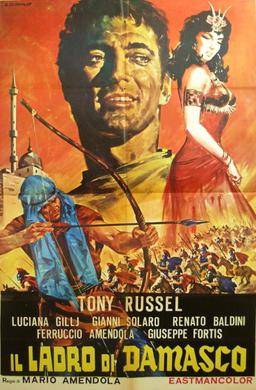
The Thief of Damascus is a 1964 Italian adventure film directed by Mario Amendola and starring Tony Russel, Luciana Gilli and Gianni Solaro. It was released in the US as Sword of Damascus at a running time of 93 minutes.


















